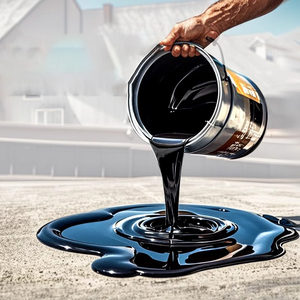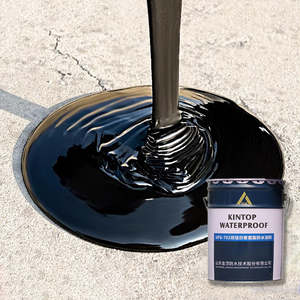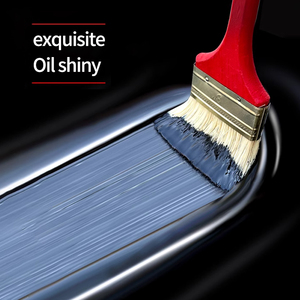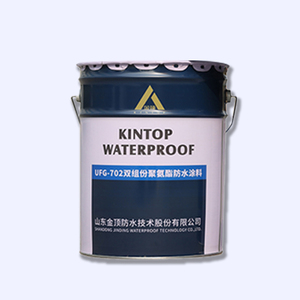
All categories
Featured selections
Trade Assurance
Buyer Central
Help Center
Get the app
Become a supplier

(3049 products available)



















































There are different types of waterproof paints in the market. Each type has distinct waterproof characteristics and uses.
Latex-based waterproof paints use water-soluble acrylic resins of a synthetic type. They are easy to apply as they can be cleaned using water. Latex waterproof paints are flexible and suitable for interior and exterior surfaces. These surfaces include concrete walls, wood, and stucco. They are ideal for drywall. This is because they are low in volatile organic compounds.
Elastomeric coatings are thicker than regular paints. They form a membrane that stretches over the surface. They are effective in sealing small cracks and preventing water penetration. They are ideal for concrete and brick walls. These walls are often subjected to extreme weather conditions.
Waterproofing paints are dense coatings. They form a barrier that stops water from entering the material underneath. They are suitable for wet areas such as bathrooms, kitchens, and basements. They are available in both latex and oil-based formulations. They provide long-lasting protection against moisture and mold.
Oil-based paints penetrate the surface better than latex paints. They offer a more durable finish. They are especially useful on metal and wooden surfaces as they’re good at blocking water. However, they have less flexibility than latex and may crack over time.
These sealers are specially formulated to be absorbed deep into porous surfaces. These surfaces include concrete, brick, or natural stone. They provide waterproofing from within. They create a barrier that prevents water from settling into the material. They are ideal for driveways, patios, and exterior walls exposed to moisture.
Waterproof paint has a variety of benefits. These benefits go beyond just resisting water.
Waterproof paints create a barrier that prevents water from penetrating surfaces. This protects against damage caused by excess moisture. These damages include peeling and cracking. They are particularly useful in areas exposed to high humidity or direct rainfall.
Waterproof paint inhibits moisture accumulation. This reduces the growth of mold and mildew. This improves air quality and prevents health issues related to mold exposure. It is ideal for basements and bathrooms where mold is likely to thrive.
Waterproof paint protects materials like concrete, wood, and metal. It increases their lifespan. By acting as a shield against moisture, it reduces wear and tear. This saves money on future repairs or replacements.
Waterproof paints come in different colors and finishes. They keep a desirable appearance over time. They prevent rust on metal surfaces and stain adsorption on concrete. This also helps retain the original aesthetic of the structure.
Many waterproof wall paints are now formulated to be easy to clean. They require less frequent applications of maintenance products like sealants or new paint. This is especially useful for areas that accumulate dirt or water regularly.
While waterproof paints may have a higher initial cost than regular paints, their long-term benefits make them more economical. Their durability and protective qualities reduce the need for frequent repainting or repairs.
Waterproof paint has particular applications. Following the procedure ensures optimal performance.
The key to successful waterproof paint application is preparing the surface. They involve cleaning, fixing imperfections, and applying primer. Cleaning the surface removes all dirt, grease, and old paint. This ensures better adhesion. Repairing cracks or holes with putty or filler makes the surface even. Apply waterproof primer before the paint. It improves the paint's grip on the surface.
Waterproof paint can be applied using brushes, rollers, or sprayers. The choice depends on the size of the job and the type of surface. Large flat surfaces benefit from rollers and sprayers. Using sprayers works faster, especially for large areas. But they create more overspray, leading to mess.
Waterproof wall coating needs multiple coats for maximum effectiveness. One coat is never enough. Two or three coats offer better moisture protection and a more uniform look. Follow the manufacturer's guidelines on the number of coats and drying times between applications.
Let the paint cure fully after applying. Avoid exposing it to water or heavy moisture during the curing process. This can take from several days to weeks, depending on the type of paint. Limit washing methods and avoid using sealants over the paint until it's fully cured. Doing so helps the paint create a strong bond with the surface.
Choosing the right waterproof paint depends on the market's various considerations. These considerations include the type of surface and local climate conditions.
Select waterproof paint based on the type of surface needing painting. It can be for interior or exterior use. Their formulation is tailored to provide grip to different textures. They include wood, concrete, or drywall. Choose concrete waterproof paint designed for high-traffic outdoor areas. It offers slip resistance and durability.
Assess the local climate when choosing waterproof paint. In areas with high humidity, opt for paints that resist mold and mildew. They are effective in such climates. Regions with severe rainfall will benefit from paints with high elastomeric content. They offer better protection.
Waterproof paints come in various finishes. These finishes range from matte to high gloss. Each finish impacts the paint's durability and ease of cleaning. Glossy finishes provide a smoother surface that repels water better than matte ones. Waterproof paints with low-gloss or satin finishes are ideal for indoor areas like kitchens and bathrooms.
Waterproof paints are formulated for both indoor and outdoor applications. Indoor formulations are low in volatile organic compounds. This improves air quality. Outdoor paints are made to withstand UV rays and extreme weather. Choose one that suits the intended environment.
Oil-based waterproof paints offer a durable, hard-to-clean finish. Latex-based paints are easier to apply and clean as they use water as a thinner. They are also more flexible. This makes them ideal for surfaces that expand and contract with temperature changes.
A1: Waterproof paints incorporate pigments and resins that have the ability to repel both liquid water and water vapor. Waterproof coatings are specialized materials that provide a thicker and more robust barrier against water infiltration. Waterproof paint is ideal for interior and some exterior surfaces. Waterproof coatings are suitable for foundations, basements, and areas with excessive water exposure.
A2: While it’s possible to apply waterproof paint over old painted surfaces, the success of the application depends on the condition of the old paint. It should be cleaned and prepared well. Old paint should be scraped and sanded to create a smooth surface.
A3: The durability of waterproof paint depends on various factors. They include the type of material it’s applied to and environmental conditions it faces. Generally, quality waterproof paint lasts around 5 to 10 years.
A4: Today there are eco-friendly waterproof paints. They are low-VOC formulations.
A5: Mold and mildew thrive on damp surfaces. When waterproof paint creates a barrier that prevents moisture from settling on surfaces. It also keeps the surface drier. This makes it harder for mold and mildew to develop.